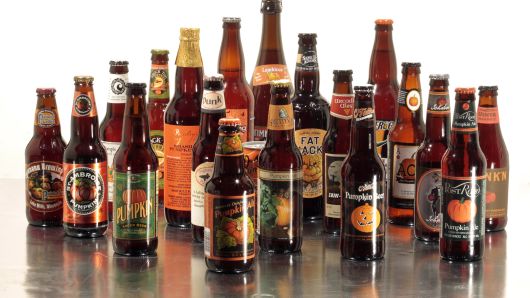
Pumpkin beers are back – for gourd or bad.
For some beer lovers, the August arrival of pumpkin beers is a tasty treat. But for others, this annual influx of fall-flavored brews coming with nearly a month of summer remaining is a cringe-worthy trick.
Pumpkin beers have scared up a spike in beer sales for years. At times pumpkin beers from craft breweries have rivaled sales of India pale ales during the months they were available. As the competition became more heated, more pumpkin beers began showing up in stores – and even earlier in August.
That “seasonal creep” left shoppers confronted with pumpkin beer just as they start to consider buying a malty, sweet Oktoberfest lager.
But the Great Pumpkin Beer Battle may have cooled a bit. The beers are still hitting stores ahead of arrival of Starbuck’s Pumpkin Spice Latte, which is returning Aug. 28, but with a downtick in variety and volume.
“We’re getting back a better equilibrium where pumpkin is still a big part of many brewers’ portfolios in the fall, but isn’t as big within the category as it was a few years ago,” said Bart Watson, chief economist for the Brewers Association, a trade group representing smaller, independent brewers.
Seasonal beers, which include pumpkin beers, still represent about 16 percent of craft beer sales, based on data from IRI, a Chicago-based market research firm that tracks sales at supermarkets, mass market chains and convenience stores.
But seasonal beers, which carved out up to 20 percent of annual craft beer sales in the past, were down 6 percent last year in the 12 weeks leading up to Dec. 3, 2017, according to IRI.
A possible reason for the decline in seasonal beers: The constant flow of new beers year-round from more than 6,200 U.S. breweries, microbreweries and brewpubs. Seasonal beers may no longer be needed to “scratch that ‘what’s new’ itch that many craft lovers have as part of their preferences,” Watson said.
For several years, brewers and distributors got “a bit over-enthusiastic about pumpkin given its tremendous growth, leading to a year of big orders where lots of pumpkin beer was still on the shelves when its prime selling season ended,” Watson said. “That led to a big correction the following year where orders were way down and sales dropped.”
The battle for pumpkin beer market share hit its high point in 2014, says Phin DeMink, the founder and owner of Southern Tier Brewing Co. in Lakewood, N.Y., which began selling Pumpking, an 8.6 percent ABV pumpkin ale in 2007.
“The consumer was overwhelmed,” DeMink said. “The beer category was flooded with new entries and it took a couple of seasons to kind of cycle that out and for some of the wholesalers and retailers to realize (they) can’t do 30 pumpkin beers well, but can probably do five of them and get the same kind of volume
DeMink says the craft beer market has “gone through that cycle and we are looking healthy again.” Southern Tier’s Pumpking proved so popular the brewery sells several other pumpkin beers including a rum barrel-aged Pumpking, a Cold Press Coffee Pumking and Warlock, an imperial pumpkin stout.
At Dogfish Head Craft Brewery in Milton, Del., founder Sam Calagione agrees brewers are frustrated when their pumpkin beers get put on shelves too early.
“We try to say, ‘Please don’t put it on the floor until just before Labor Day’,” said Calagione about Dogfish Head’s Punkin Ale, which the brewery began producing annually after it opened in 1995. The beer remains its top-selling seasonal even though sales declined a bit with the deluge of competitors. But sales of the 7 percent ABV ale are on the rise again, Calagione says.
“On the day we make it, our brewery looks more like an artisanal bakery … with the real pumpkin and us crushing the spices and the sacks of brown sugar,” he said. “Consumers can taste that.”
Pumpkin beers have a historic place in the country’s brewing past. Bill Owens of Buffalo Bill’s Brewery in Hayward, Calif., is credited with resurrecting the style after reading how George Washington made beer from pumpkin. He added the traditional spices used in pumpkin pie to evoke flavors of the fall holiday dessert.
“People thought I was crazy for wanting to put a pumpkin beer in the market,” said Keith Villa, who was the brewmaster at the brewery within Coors Field before founding Blue Moon Brewing Co, now a part of MillerCoors. “They were saying they wanted an Oktoberfest. That was the traditional beer for fall.”
But Blue Moon Harvest Pumpkin Ale, first released in 1995, became the biggest-selling pumpkin beer in the U.S. and its Harvest Pumpkin Wheat beer is currently arriving in stores.
Now, beer lovers anticipate the arrival of pumpkin beers. “You look at Starbucks and their Pumpkin Spice Latte,” said Villa, who in January retired from Blue Moon. “People wait for that. It’s the same with beer.”
